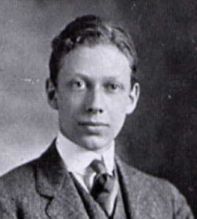|
Dr. Daniel N. Eisendrath
Chicago surgeon Daniel Nathan
Eisendrath (1867-1939) was one of the physicians who
treated Iroquois Theater victims taken to John
Thompson's Diner on Randolph St. next to the
theater. As a teacher and practicing physician,
Eisendrath worked near the Iroquois and was among
the first to offer assistance. Requests for medical
volunteers that afternoon went out from several
sources, including the police department and via a
telephone canvas in an office building where many
doctors had offices. An estimated one hundred
medical people responded, pitching in at the diner,
nearby drugstores, taverns and hospitals.
Initially, there was chaos in
the cramped quarters at Thompson's diner. Reporters
looked for quotes; distraught families searched for
relatives. Chorus girls looked for unguent and
shelter. First-responders sought medical help for
new victims, and places to lay their bodies. Gawkers
looked for noteworthy sights and thieves looked for
valuables. While hundreds streamed between piles of
the deceased and improvised operation stations,
doctors and nurses struggled to reach victims. The
call for volunteer medical workers had produced a
bountiful supply but their services were not used
well until Senator
Clark spoke up and began organizing the effort.
A newspaper described Daniel
Eisendrath as having started to examine a dead child
when he was surprised to recognize the victim. It
was ten-year-old Jacob
"Jack" Pottlitzer, the son of a former patient.
He'd lost the boy's mother, Emily M. Felsenthal
Pottlitzer (1873-1903) of Lafayette, IN, to surgical
complications in March. Eisendrath stepped away
briefly to call the family with the tragic news of the boy's death.
|
 |
Daniel could as easily have
happened upon the faces of his own relatives amidst
the Iroquois victims. Henrietta and
Natalie Eisendrath were his aunt and cousin.
Daniel's father was the brother of Henrietta's
husband and Natalie's father. Natalie and Henrietta
had died in the auditorium and their bodies
taken directly to morgues.
Bio
The son of German immigrants, wholesale fruit
dealer, Nathan S. Eisendrath (1823-1902), and Helena
Fellheimer Eisendrath (1824-1906), Daniel had
graduated from Northwestern in 1891 and done his
internship at Cook County hospital then studied
abroad, where he served as a staff surgeon in a
hospital in Hamburg, Germany. He returned to Chicago
in 1898 and married married Maud L. Rosenbaum
(1978-1953). He and Maude's only child, Richard
Eisendrath, became a pioneer in radio.*
In the years after the fire
Eisendrath became a
professor of surgery at the college of medicine,
University of Illinois and attending surgeon at Cook
County hospital, as well as an assistant professor
of genito-urinary surgery at Rush Medical College
and attending urologist at the Michael Reese and
Chicago Memorial Hospitals. The family left Chicago
in 1929 so Daniel could become a consulting
urologist at the American hospital in Paris. He
authored several books and monographs.
|
|
Discrepancies and addendum

* Son Richard
Eisendrath later changed his last name to Richard
Eaton. After graduating from Harvard in 1920, he
spent many years in Europe where he worked a
journalist, author and publisher. Back in the U.S.
during WWII, he joined Mutual Broadcasting Company
as a commentator, later
founding United Broadcasting. He is credited
with having pioneered black-oriented radio. Rev.
Jesse Jackson spoke at a testimonial dinner a year
before his death.
|
